Tomb of Dandelion
The Tomb of Dandelion is a recently discovered tomb from a small, previously uncharted village of Alhindiba. Hidden in the sands of the Sahara Desert, this tomb was found to be a shrine dedicated to the God Dandelion. This is not a god previously researched, and there is very little knowledge available, so our team assumed that this was a God that only the village worshipped. This site will showcase the major items we believe to have been significant to the worshippers and their God, cleaned as best we could to best show the artefacts. This is the first time this tomb has been discovered, so we are creating this site to start the beginning of an amazing historical record and to encourage research into this village and their God that has long since been forgotten.
Portrait
This portrait was found on top of the sarcophagus. It shows what we believe to be the village’s interpretation of their God
Dandelion. Depicted as a being who primarily, or the stories have claimed, to wear a blue neme, but will also often choose to wear
colourful jewellery and outfits. The sarcophagus itself was empty except for a single item, either having been raided previously or there being no offerings
inside in the first place. It seems uncustomary, but it suggests that this village was further distanced from the rituals and traditions
of the well-known Egyptian Gods.

Cat Toy
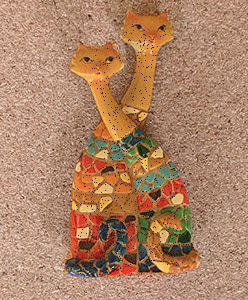 This small figurine shows two cats sitting together, one in front of the other. A small toy such as this suggests that Dandelion favoured
cats, as most Egyptian Gods were wont to do. Cats themselves were often seen as harbingers of good luck and fortune, and often people assumed
that sometimes a God would visit them in the form of a cat. There were no other forms of animals in the tomb, instead there were more small cat
figurines of varying sizes and colours, simple items that could be used as cat toys and some fish bones presumably left behind and eaten by stray
cats.
This small figurine shows two cats sitting together, one in front of the other. A small toy such as this suggests that Dandelion favoured
cats, as most Egyptian Gods were wont to do. Cats themselves were often seen as harbingers of good luck and fortune, and often people assumed
that sometimes a God would visit them in the form of a cat. There were no other forms of animals in the tomb, instead there were more small cat
figurines of varying sizes and colours, simple items that could be used as cat toys and some fish bones presumably left behind and eaten by stray
cats.
Necklace
This ornate necklace was found on the floor next to the sarcophagus, among the many jewellery items that lay there. Presumably, all
the jewellery and gold were piled on top on the sarcophagus and have simply fallen to be covered by dust. The necklace was surprisingly
heavy, and after some delicate cleaning, the worth of the necklace becomes obvious. A combination of sapphires and diamonds lay in a
simple alternating pattern held together by a gold frame, and is worn close to the neck with a simple short, gold rope.
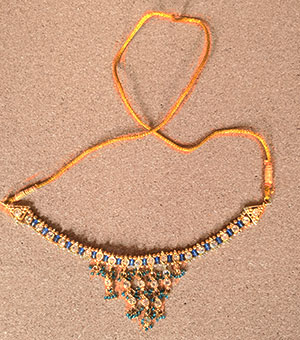
Books
 These books contain texts about Dandelion, the stories of how Dandelion became a God, the victories he celebrated, the loses he raged against,
and the numerous days he spent walking among humans before ascending. The stories claim that Dandelion received many sacrifices, those of which
ranged from large sheep from the village hunters to bundles of flowers from the children. There is no record of villagers themselves being sacrificed,
however, there is a chance that evidence may have faded over time, so there is also no way to be completely sure.
These books contain texts about Dandelion, the stories of how Dandelion became a God, the victories he celebrated, the loses he raged against,
and the numerous days he spent walking among humans before ascending. The stories claim that Dandelion received many sacrifices, those of which
ranged from large sheep from the village hunters to bundles of flowers from the children. There is no record of villagers themselves being sacrificed,
however, there is a chance that evidence may have faded over time, so there is also no way to be completely sure.
Candle
The candles were found, impossibly, still burning on the floor of Dandelion’s tomb, full of wax. Simple and scentless soy candles were a stark contrast to
the burnt out rushlights and torches hanging from the ceiling and walls of the tomb. This photo only shows one of many that we saw, because once we left the
tomb with a single candle, that flame flickered out. We assume these candles were placed for aesthetic instead of functional purposes, but there were a few
incense sticks scattered around that suggest lighting incense was common in the tomb, for meditation and prayer.
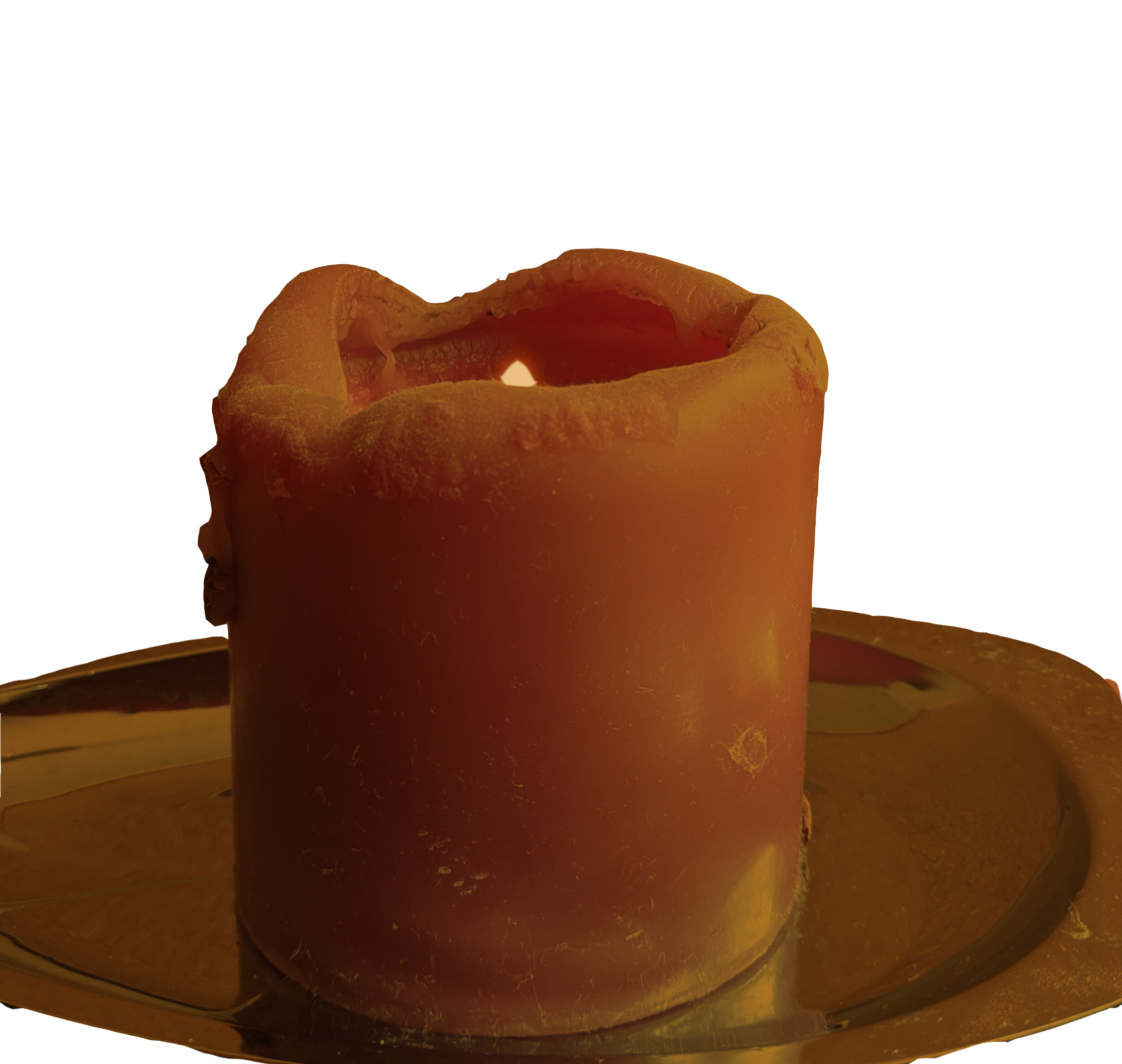
Tea Set
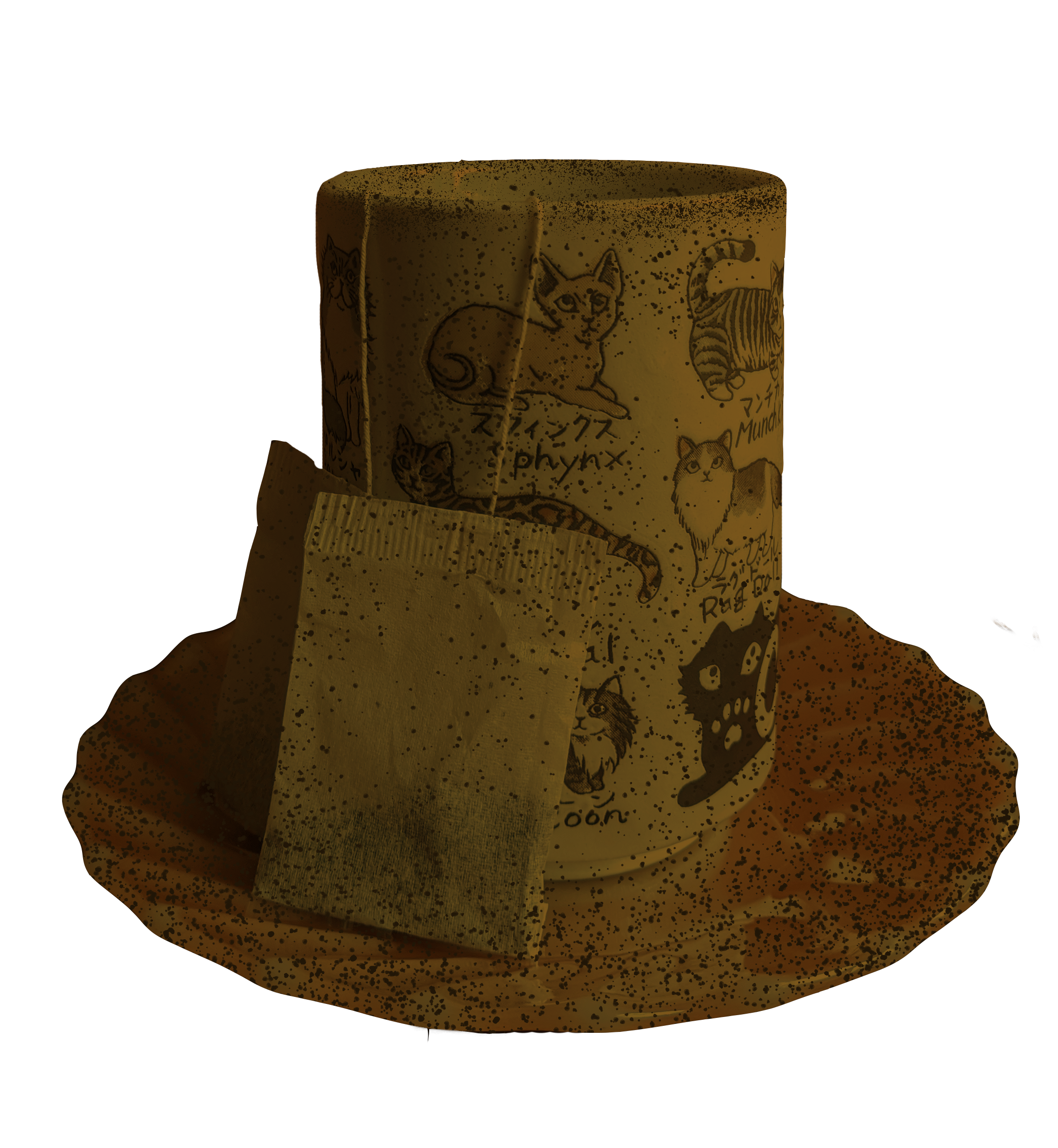 Empty boxes of tea were found scattered around the tomb, but surprisingly, a few teabags remain that we found in a still useful clay mug set on top
of a fragile plate. Black tea was, and still is, the most common to drink. The two different ways to drink tea included a very light steep, with a
small teaspoon of milk, and a very heavy steep, with a tablespoon of milk. The taste of these teabags has most likely faded, with how long they’ve
been outside of their packaging, but not many were considering drinking them anyway.
Empty boxes of tea were found scattered around the tomb, but surprisingly, a few teabags remain that we found in a still useful clay mug set on top
of a fragile plate. Black tea was, and still is, the most common to drink. The two different ways to drink tea included a very light steep, with a
small teaspoon of milk, and a very heavy steep, with a tablespoon of milk. The taste of these teabags has most likely faded, with how long they’ve
been outside of their packaging, but not many were considering drinking them anyway.
Pillow
A simple pillow was the only other item found in the sarcophagus, maroon with a gold tree embraided into it. A pillow perhaps for the comfort of a
being who might lie in the sarcophagus. Just the thought of the God being supplied with comfort is enough to justify the placing of a pillow. It
claims that Dandelion was a simple god, who had no need for luxuries but the barest of what life could offer. The pillow is almost untouched, apart
from some slight discolouration due to age.

Rice
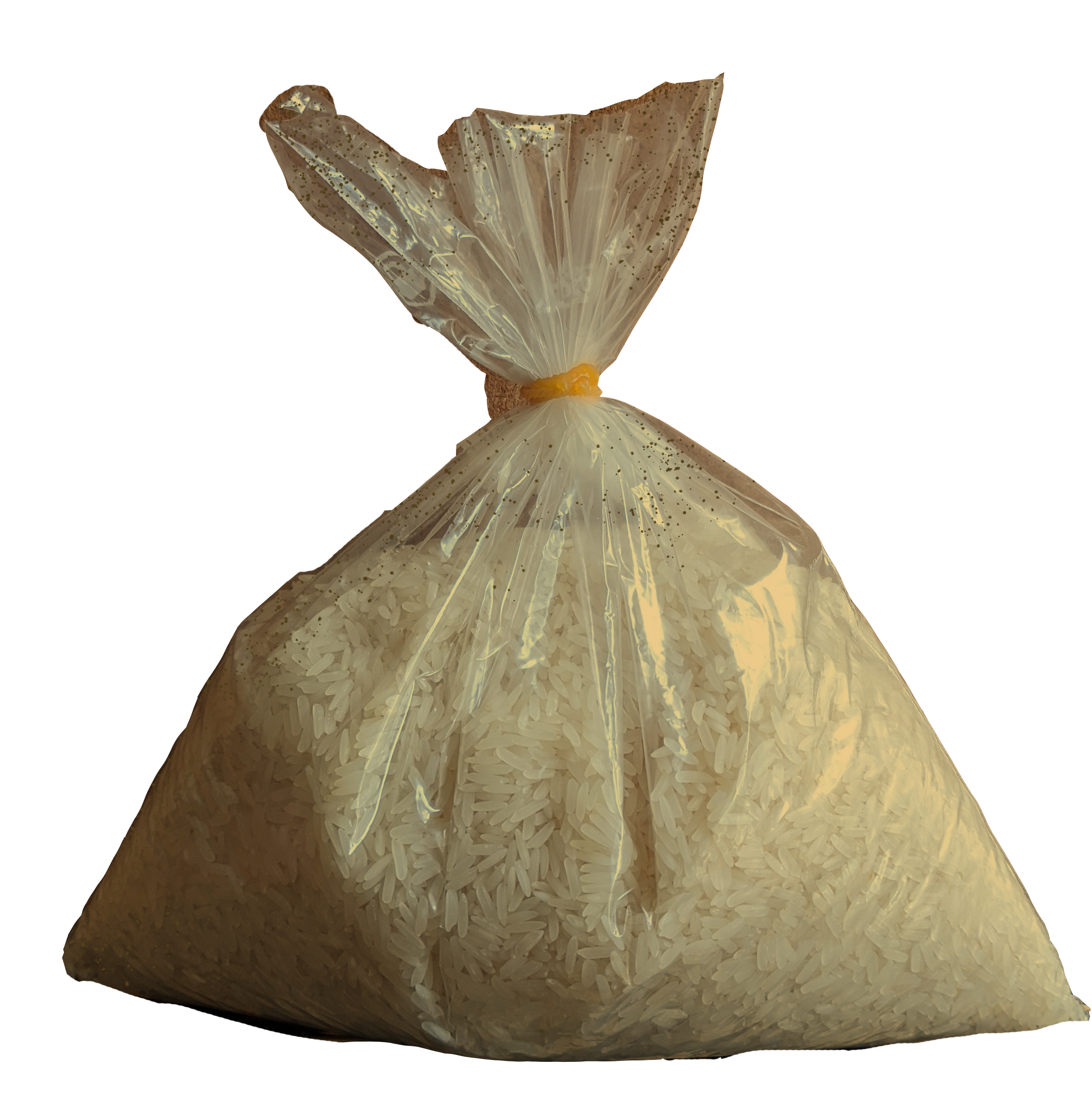 Rice is the most basic of food staples, and the village of Alhindiba was abundant with rice grains. The tomb was filled with bags of rice everywhere,
as Alhindiba presumably received other resources by trading their rice. Tied in bags with a small rubber band, the rice is still good enough to cook with
and eat now, even though it looks to be very old. Rice is the most simple of offerings for Dandelion, and they offer it as thanks when the crop yields are
good.
Rice is the most basic of food staples, and the village of Alhindiba was abundant with rice grains. The tomb was filled with bags of rice everywhere,
as Alhindiba presumably received other resources by trading their rice. Tied in bags with a small rubber band, the rice is still good enough to cook with
and eat now, even though it looks to be very old. Rice is the most simple of offerings for Dandelion, and they offer it as thanks when the crop yields are
good.